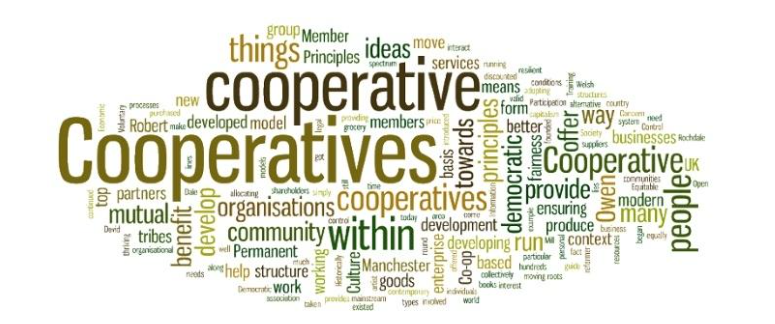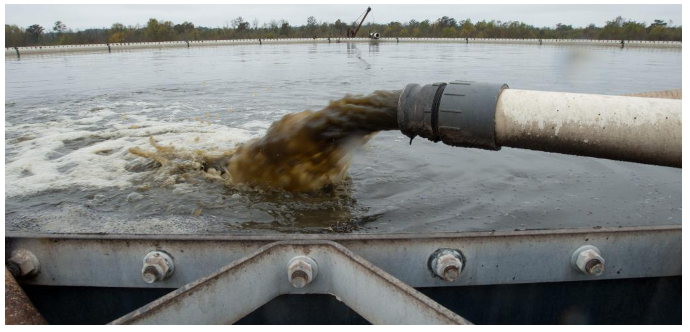Thursday, 7th March 2024
Rising Obesity Trends in India
In News: A recent publication in The Lancet has highlighted the concerning surge in obesity rates among children, adolescents, and adults globally over the last few decades.
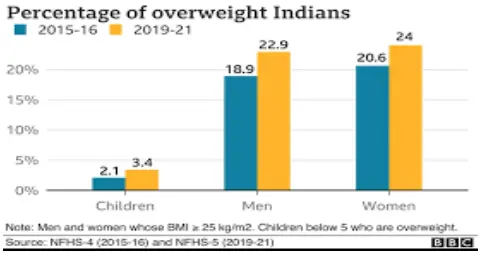
Key Highlights of the Study
- India's Statistics on Obesity and Undernutrition
- Obesity in Children: The Lancet reported a significant rise, with 12.5 million Indian children aged 5-19 classified as grossly overweight in 2022, compared to 0.4 million in 1990.
- Global Ranking: In 2022, India ranked 174th globally in the prevalence of obesity among girls and boys.
- Adult Obesity: Women's obesity increased from 1.2% (1990) to 9.8% (2022), and men's from 0.5% to 5.4% in the same period.
- Undernutrition: India faces a "double burden" of malnutrition, with 13.7% of women and 12.5% of men underweight.
- Global Overview of Obesity and Underweight
- One Billion Affected: Worldwide, over one billion individuals suffer from obesity, including 159 million children and adolescents and 879 million adults in 2022.
- Combined Prevalence: The burden of underweight and obesity has increased globally, with prevalence highest in island nations, the Caribbean, Polynesia, Micronesia, and the Middle East and North Africa.
- Factors Contributing to Obesity
- Gender Disparities: Women are more susceptible to weight gain due to time constraints, focusing on family nutrition over their own, and inadequate sleep.
- Junk Food Accessibility: Cheap and easily available unhealthy food options contribute to rising obesity rates, even among lower-income individuals in regions like Tamil Nadu, Punjab, and Goa.
India's Nutrition Initiatives
- Eat Right Mela
- Nationwide initiative promoting healthy eating habits and nutrition awareness.
- Fit India Movement
- Government campaign promoting physical fitness and overall wellness.
- Eat Right Station Certification
- Recognition for railway stations promoting healthy food choices.
- Mission Poshan 2.0
- National mission addressing malnutrition and promoting optimal nutrition.
- Mid-Day Meal Scheme
- School-based program providing nutritious meals to children.
- Poshan Vatikas
- Gardens promoting the cultivation of nutrient-rich foods.
- Anganwadi
- Centers offering healthcare and nutrition services for mothers and children.
- Integrated Child Development Services (ICDS) Scheme
- Comprehensive program addressing the health and nutrition needs of children.
- Pradhan Mantri Matru Vandana Yojana (PMMVY)
- Maternity benefit scheme ensuring proper nutrition during pregnancy.
Way Forward
- Holistic Approach to Nutrition
- Combating Combined Burden: Addressing obesity and underweight together, focusing on holistic nutrition programs.
- Programs Needed: Targeted cash transfers, food subsidies, healthy school meals, and primary care-based nutritional interventions.
- Urgent Action on Obesity
- Prevention and Management: Emphasizing prevention and support for weight loss, especially with a decreasing age of obesity onset.
- Duration Matters: Recognizing the importance of early intervention due to a decrease in the age of obesity onset.
|
UPSC Previous Year Questions Prelims (2016) Q. Which of the following is/are the indicators/ indicators used by IFPRI to compute the Global Hunger Index Report?
Select the correct answer using the code given below: (a) 1 only Ans: (c) Prelims (2018) Q.2 With reference to the provisions made under the National Food Security Act, 2013, consider the following statements:
Which of the statements given above is/are correct? (a) 1 and 2 only Ans: (b) Mains (2018) Q. How far do you agree with the view that the focus on lack of availability of food as the main cause of hunger takes the attention away from ineffective human development policies in India? |
Source: TH

Parliamentary Privileges and Associated Legal Cases
In News: The Supreme Court recently overturned a 25-year-old majority opinion in the P V Narasimha Rao v State (CBI/Spe) Case, 1998, also known as the JMM (Jharkhand Mukti Morcha) bribery case.
P V Narasimha Rao Case and Recent Supreme Court Ruling
- Background of the P V Narasimha Rao Case
- 1993 Incident: Members of Jharkhand Mukti Morcha accused of taking bribes in the P V Narasimha Rao case related to a No-Confidence motion.
- Concerns Raised: Highlighted corruption allegations within the parliamentary system, questioning legislative integrity and representative accountability.
- Supreme Court's 1998 Observation in P V Narasimha Rao Case
- Immunity Established: Ruling provided immunity for MPs from prosecution in bribery cases if they fulfilled their end of the bargain.
- Article 105(2): Bribe takers voting against the no-confidence motion immune from criminal prosecution under Parliamentary Privilege.
- Supreme Court's 2024 Observation
- Overturning Previous Verdict: 7-Judge Constitution Bench overturned the 5-Judge Bench's 1998 decision.
- Deterrence for Bribery: Emphasized the detrimental impact of bribery on democratic principles, asserting that immunity does not extend to cases of bribery.
- Precedence on Accountability: Shift towards prioritizing accountability and integrity in governance over stability alone.
Parliamentary Privileges
- About Parliamentary Privileges
- Definition: Special rights, immunities, and exemptions for Parliament members and their committees defined in Article 105 of the Indian Constitution.
- Application: Similar privileges guaranteed to Members of Legislative Assemblies under Article 194.
- Privileges of Individual Member
- Freedom of Speech: Article 105(1) ensures freedom of speech in Parliament.
- Immunity: Article 105(2) provides immunity from court proceedings for statements or votes made in Parliament.
- Collective Privilege of House
- Immediate Intimation: Right of the House to receive immediate notice of a Member's arrest, detention, conviction, or release.
- Immunity within Precincts: Protection from arrest and legal process within the precincts of the House without permission.
- Confidential Proceedings: Safeguarding the confidentiality of secret sittings and committee reports.
International Practices Regarding Parliamentary Privileges
- United Kingdom
- Similar Privileges: Parliament at Westminster enjoys comparable privileges, including freedom of speech and immunity from arrest.
- Canada
- Constitutional Basis: Canadian Parliament privileges outlined in the Constitution Act, 1867 and the Parliament of Canada Act.
- Australia
- Constitutional Enshrinement: Australian Parliament's privileges, including freedom of speech, enshrined in its Constitution.
Need to Codify Parliamentary Privileges
- Clarity and Precision
- Definition: Codification provides a clear and precise definition of parliamentary privileges, eliminating ambiguity.
- Threshold Establishment: Establishes a precise threshold for privilege violations.
- Enhanced Accountability
- Guidelines: Clearer guidelines facilitate better accountability mechanisms for responsible privilege exercise.
- Modernization and Adaptation
- Updating Laws: Codification allows updating and modernizing laws to reflect contemporary governance practices.
- Checks and Balances
- Preventing Misuse: Codification introduces checks and balances, preventing misuse and curtailment of press freedom.
Against Codification of Parliamentary Privileges
- Risk of Encroachment
- Judicial Scrutiny: Codification may subject parliamentary affairs to greater judicial scrutiny, risking encroachment on legislative autonomy.
- Constitutional Mandate: Article 122 restricts courts from inquiring into parliamentary proceedings.
- Loss of Flexibility
- Adaptability: Codification may restrict the flexibility of privileges, making adaptation to changing political dynamics challenging.
- Complexity and Lengthy Process
- Deliberation Required: Codifying privileges could be complex and time-consuming, necessitating extensive deliberation among stakeholders.
Way Forward
- Alignment with Fundamental Rights: Parliamentary privileges must align with fundamental rights to preserve the essence of democracy.
- Responsibility and Avoidance of Misuse: MPs should exercise privileges responsibly, avoiding misuse and upholding the principles of democracy.
|
UPSC Previous Year Questions Prelims (2014) Q. Which of the following are the discretionary powers given to the Governor of a State?
Select the correct answer using the code given below: (a) 1 and 2 only Ans: (b) Mains (2014) Q. What do you understand by the concept of “freedom of speech and expression”? Does it cover hate speech also? Why do the films in India stand on a slightly different plane from other forms of expression? Discuss. |
Source: IE
Fourth Wave of Coral Reef Bleaching
In News: As per the U.S. National Oceanic and Atmospheric Administration (NOAA), the globe is teetering on the brink of a fourth extensive coral bleaching episode
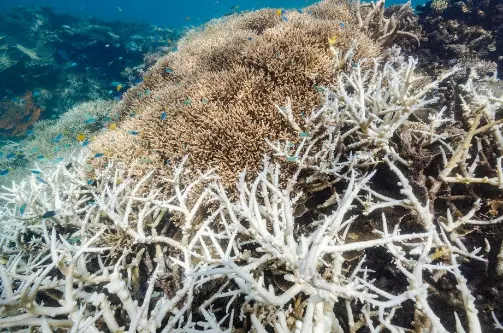
Understanding Corals and Coral Reefs
- Coral Basics
- Corals are symbiotic animals (polyps) living with tiny algae called zooxanthellae.
- Mutual exchange: Algae provide food and oxygen; corals offer a secure habitat.
- Coral Reefs
- Limestone structures formed by countless coral animals.
- Predominantly found in tropical climates.
- Coral Bleaching and Concerns
- Definition: Stressful conditions (high temperatures, pollution) lead corals to expel zooxanthellae.
- Consequence: Loss of color, turning white ("bleaching") and inability to survive.
- Recovery: Removal of stressors allows zooxanthellae to return, aiding coral recovery.
- Importance of Coral Reefs
- Habitat and food source for diverse marine species.
- Coastal protection from erosion and storms.
- Crucial role in climate regulation by absorbing and storing carbon dioxide.
- Valuable display of biodiversity and natural beauty.
NOAA's Findings on Impending Coral Bleaching Event
- Fourth Mass Coral Bleaching Event
- Historical occurrences: 1998, 2010, 2014.
- Global significance: Widespread bleaching in the Atlantic, Pacific, and Indian oceans.
- Previous Bleaching Impact
- 2014-2017: Global event led to a significant loss, especially the Great Barrier Reef.
- Approximately 15% of the world's reefs experienced major coral die-offs.
- Worsening Situation
- Current year's outlook: Indications of a more severe event.
- Example: Caribbean witnessed its worst coral bleaching after the Northern Hemisphere summer.
- Climate Factors
- El Niño influence: Warmer-ocean waters linked to coral bleaching.
- Climate change impact: Record-breaking 12-month period with an average temperature over 1.5 degrees Celsius.
- Tipping point: Scientists estimate a 1.5C rise could lead to mass coral die-offs, risking 90% of the world's coral reefs.
Source: REUTERS
Chalukya Expansion Unveiled through Temple Discoveries
In News: PRIHAH archaeologists in Telangana unearthed two ancient Badami Chalukyan temples and a rare inscription in Mudimanikyam village, Nalgonda district.
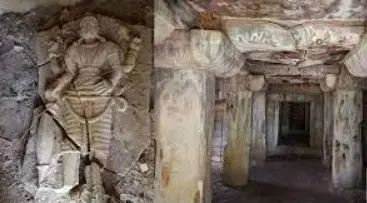
Major Highlights of Recent Excavation
- Temple Discoveries
- Location: Two temples at the village's end, dating back to 543-750 AD during the Badami Chalukya rule.
- Architectural Blend: Unique blend of Badami Chalukyan and Kadamba Nagara styles in the Rekha nagara format.
- Artifacts: Discovery of a panavattam in one temple's sanctum and a Vishnu idol in another.
- Inscription Findings
- Gandaloranru Inscription: Dating back to the 8th or 9th Century AD, providing historical context to the site.
- Significance:
- Boundary Expansion: Extends known boundaries of the Chalukya kingdom, challenging previous assumptions about the farthest reaches of their influence.
Key Features Related to the Chalukya Dynasty
- Overview
- Territorial Influence: Governed southern and central India from the 6th to 12th centuries.
- Distinct Dynasties: Comprised Chalukyas of Badami, Eastern Chalukyas, and Western Chalukyas.
- Chalukyas of Badami
- Origin: Originated in Vatapi (modern Badami, Karnataka).
- Zenith under Pulakeshin II: Reached its peak under Pulakeshin II's reign in the mid-8th century.
- Administrative Structure: Implemented a structured administrative system for effective governance.
- Legacy and Successors
- Eastern Chalukyas: Emerged in the eastern Deccan, centered around Vengi until the 11th century.
- Western Chalukyas: Descendants ruling from Kalyani until the late 12th century.
- Founders and Cultural Contributions
- Pulikesin I: Credited with fortifying a hill near Badami, laying the foundation for the dynasty.
- Cultural Hub: Badami served as the epicenter of Chalukya power and culture.
- Administrative System
- Structured Governance: Divided the realm into Vishayam, Rastram, Nadu, and Grama for effective administration.
- Religious Patronage
- Saivism and Vaishnavism: Notable patrons of both Hindu sects.
- Jainism and Buddhism: Supported diverse religious practices, showcasing commitment to religious diversity.
- Architectural Contributions
- Temple Construction: Introduced soft sandstones for temples in Deccan, known for both excavated cave and structural temples.
- Prominent Sites: Notable temples in Badami, Pattadakal, and Aihole.
- Literary and Language Recognition
- Sanskrit Inscriptions: Utilized Sanskrit for official inscriptions, emphasizing classical literature.
- Regional Language Acknowledgment: Recognized Kannada as the language of the people, alongside Sanskrit.
- Artistic Endeavors
- Painting Style: Adopted the Vakataka style in painting, with examples found in a Vishnu cave temple in Badami.
Way Forward
- Historical Exploration: Ongoing excavations continue to unveil the rich history and architectural prowess of the Chalukya dynasty.
- Preservation and Research: The discoveries provide valuable insights, emphasizing the importance of preserving and researching India's cultural heritage.
Source: TOI
RAD51
In News: The RAD51 protein has been recognized by researchers as a crucial factor in inhibiting the occurrence of DNA re-replication.
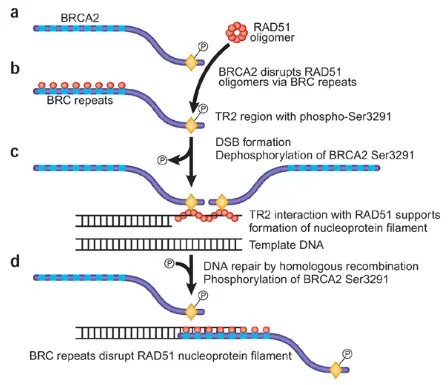
RAD51 Recombinase
- Overview
- RAD51 recombinase, encoded by the RAD51 gene, is a crucial protein involved in homologous recombination and DNA repair processes within cells.
- Functional Role
- RAD51 plays a vital role in homologous recombination by locating and invading homologous DNA sequences, facilitating accurate and timely DNA repair.
- Causes of DNA Breaks
- DNA breaks can result from natural, medical radiation, environmental exposures, or chromosome exchanges during cell division preparation.
- Repair Process Initiation
- RAD51 protein binds to DNA breaks, forming a protein sheath around the damaged site, serving as a fundamental step in the DNA repair process.
- Nuclear Interactions
- In the nucleus of normal cells, RAD51 interacts with proteins like BRCA1 and BRCA2 to collaboratively repair damaged DNA.
- BRCA2 Regulation
- BRCA2 regulates RAD51 activity by transporting it to DNA damage sites within the nucleus, contributing to effective repair mechanisms.
- BRCA1 Interaction
- While the interaction between BRCA1 and RAD51 is not fully understood, research suggests that BRCA1 may also activate RAD51 in response to DNA damage.
- Stability Maintenance
- RAD51, BRCA1, and BRCA2 collectively contribute to DNA repair, preserving the stability of a cell's genetic information.
Homologous Recombination
- Definition
- Homologous recombination is a genetic recombination process where similar or identical molecules of nucleic acids exchange genetic information.
- Repair Mechanism
- Cells utilize homologous recombination, particularly homologous recombinational repair (HRR), to accurately mend double-strand breaks in DNA.
- Genetic Variation
- During meiosis, homologous recombination creates new DNA sequence combinations, fostering genetic variation among offspring and supporting evolutionary adaptation.
- Horizontal Gene Transfer
- Homologous recombination is instrumental in horizontal gene transfer, allowing the exchange of genetic material between different strains and species of bacteria and viruses.
- Antibiotic Resistance Spread
- Horizontal gene transfer through homologous recombination is a primary mechanism for the dissemination of antibiotic resistance in bacterial populations.
Source: NM

UDGAM Portal
In News: The Reserve Bank of India recently announced that 30 banks are enabling individuals to explore and locate their unclaimed deposits or accounts via the UDGAM portal.
About UDGAM Portal
- Meaning of UDGAM
- UDGAM, standing for Unclaimed Deposits-Gateway to Access information, is an online platform developed by the Reserve Bank of India (RBI).
- Centralized Search Facility
- The portal allows registered users to efficiently search for unclaimed deposits or accounts across 30 participating banks, covering approximately 90% of unclaimed deposits in value terms within the Depositor Education and Awareness (DEA) Fund of RBI.
- Scope of Coverage
- UDGAM encompasses all unclaimed deposits and accounts held under the Depositor Education and Awareness (DEA) Fund of RBI, catering to both individuals and non-individuals categories.
- Information Access
- It serves as a centralized hub for information on the claim and settlement processes of each bank, facilitating users with a comprehensive view of unclaimed deposits across multiple banks.
- Claim Process
- Unclaimed deposits can only be claimed directly from the respective bank. The portal provides details on the necessary steps for claiming these unutilized funds.
- Registration and UDRN
- Upon registration on the UDGAM portal, users are assigned a unique Unclaimed Deposit Reference Number (UDRN). Generated through Core Banking Solution (CBS), this number ensures the confidentiality of account holder and bank branch information, preventing third-party identification.
- Confidentiality Mechanism
- The UDRN mechanism ensures that neither the account holder nor the maintaining bank branch can be discerned by any external party.
- Seamless Claim Settlement
- The UDRN facilitates banks in smoothly settling claims submitted by customers or depositors who successfully locate their unclaimed deposits through the UDGAM portal.
Source: ET
Cycas Circinalis
In News: In the northern regions of Kerala, Cycas circinalis is facing the imminent threat of extinction due to the rapid spread of an unidentified plant disease.
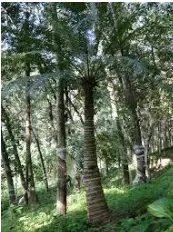
About Cycas circinalis
- Common Names
- Known as Eenthu Pana in Kerala, Cycas circinalis is referred to by various names across different states, such as Mund isalu (Kannada), madana kama raja (Tamil), and Malabari supari (Marathi).
- Taxonomic Classification
- Belonging to the cycads family (Cycadaceae), Cycas circinalis is part of one of the most endangered plant groups globally. Cycads originated 300 million years ago during the Carboniferous period, making them the oldest group of seed plants.
- Physical Characteristics
- An evergreen, palm-like tree, Cycas circinalis can reach a height of up to 25 feet.
- Typically found in dense, seasonally dry scrubby woodlands in hilly areas, it may also exhibit facultative deciduousness during extremely dry periods.
- Harvesting Challenges
- Referred to as "Eenthu Pana" similar to the areca nut, it requires complete dryness for preparation, posing a challenge as it is usually harvested during the rainy season.
- Fruiting Cycle
- Cycas circinalis bears fruits after an extended period of 40 to 50 years in most cases.
- Geographical Distribution
- Endemic to India, particularly in the Western Ghats region, Cycas circinalis is found in states like Kerala, Karnataka, Tamil Nadu, and the southern part of Maharashtra.
- Endemism in India
- Of the nine cycad species recognized in India, six are endemic, highlighting the unique biodiversity within the country.
- Traditional Uses
- Valued as a nutraceutical plant, Cycas circinalis holds significance for various indigenous communities in the Western Ghats region.
Source: TH
Begonia Narahari
In News: A newly identified flowering plant species named Begonia Narahari was recently uncovered in Arunachal Pradesh by researchers.
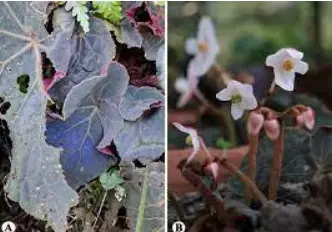
About Begonia Narahari
- New Discovery
- Recently identified flowering plant within the Begonia genus and Begoniaceae family.
- Tribute to Prof. Garikapati Narahari Sastry
- Named "naraharii" in honor of Prof. Garikapati Narahari Sastry, former director of CSIR-Northeast Institute of Science and Technology (NEIST).
- Acknowledges his significant contributions to establishing the Germplasm Conservation Centre for the Bioresources of Northeast and his commitment to the region's well-being.
- Distinctive Feature - Blue Iridescence
- Stands out for its vivid blue iridescence under direct light.
- This unique characteristic aids in identification when compared to related species.
- Limited Geographic Range
- Currently known only from the Demwe locality in the Lohit district of Arunachal Pradesh.
- Data Deficient Classification
- Provisionally classified as Data Deficient (DD) by IUCN due to limited information on its global population.
- Adheres to the species assessment guidelines provided by the International Union for Conservation of Nature.
Source: BNN
Holistic Progress Card

In News: The conventional report cards handed out to students in schools are poised for a significant transformation as the National Council for Educational and Research Training (NCERT) introduces a novel 'holistic progress card' (HPC).
About Holistic Progress Card (HPC)
- Development and Purpose
- Developed by PARAKH, a standard-setting body under NCERT, aligning with the National Education Policy (NEP) 2020.
- Designed for foundational (Classes 1 and 2), preparatory (Classes 3 to 5), and middle stages (Classes 6 to 8) of education.
- Comprehensive Assessment
- Marks a shift from traditional grading systems.
- Incorporates feedback from parents, classmates, and self-evaluation by students.
- Holistic Evaluation
- Aims to provide a comprehensive view of students' academic performance, cognitive abilities, socio-emotional skills, and creativity.
- Aligned with the National Curriculum Framework for School Education (NCFSE) for a learner-centric approach.
- Features of HPC
- Abandons reliance on marks or grades, adopting a 360-degree evaluation model.
- Students actively participate in class activities, demonstrating diverse skills and competencies.
- Assessments consider the difficulty level experienced by students during tasks.
- Teacher Insights
- Teachers register students' strengths (e.g., collaboration, creativity) and weaknesses (e.g., lack of attention, peer pressure).
- Enables personalized identification of areas where students need assistance.
- Student Involvement
- Students engage in self-evaluation and evaluate classmates.
- Encourages reflective statements such as "I learned something new" or "I expressed my creativity."
- Goal Setting
- Middle-stage students (Classes 6 to 8) prompted to set academic and personal goals.
- "Ambition card" allows outlining aspirations, areas for improvement, and required skills and habits.
- Parent and Peer Engagement
- Involves parents by integrating insights on homework, classroom engagement, and balancing screen time with extracurricular activities.
- Peer evaluation includes students assessing their classmates' contributions to activities.
Source: IE
Total Solar Eclipse
In News: On April 8, 2024, a total solar eclipse is set to occur, presenting a rare celestial phenomenon as the Sun momentarily vanishes, captivating observers worldwide.
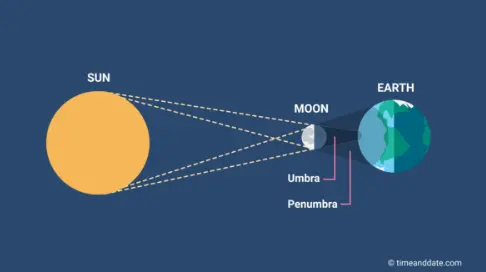
About Total Solar Eclipse
- Definition
- Occurs when the Moon passes between the Sun and Earth, completely blocking the Sun's disk and casting a vast shadow on the Earth's surface.
- Path of Totality
- Viewers along the path of totality, where the Moon's shadow completely covers the Sun, witness a total solar eclipse.
- NASA's Description
- According to NASA, during this event, the sky will darken, resembling either the onset of dawn or dusk.
- Observing the Sun's Corona
- Weather permitting, individuals within the path of totality can observe the Sun's corona, its outer atmosphere typically hidden by the Sun's bright face.
- Corona's Appearance
- The Sun's corona, extending millions of kilometers into space, appears as a faint, pearly-white halo encircling the darkened Sun's disk. It is exclusively visible during a solar eclipse.
- Phenomenon of Totality
- This solar eclipse is characterized by totality, allowing viewers to potentially see the chromosphere (a region of the solar atmosphere, appearing as a thin circle of pink around the Moon) along with the corona.
- Rare Celestial View
- Totality provides a rare sight where stars become momentarily visible as the surroundings go completely dark.
- Impact on Temperature
- The event is marked by a noticeable dip in air temperatures.
Source: IT
The Himalayan States are being suffocated by extensive amounts of plastic waste.
In News: Global plastic pollution extends to the remote corners of the planet, including the pristine Indian Himalayan Region with its vital water sources.
Analysis of Plastic Presence in the Indian Himalayan Region and Its Ramifications
- Microplastics in the Himalayas: An Unseen Threat to Pristine Glacial Ecosystems
- Definition: Microplastics, tiny particles from plastic degradation, infiltrate the Himalayan mountains.
- Concern: Found within glacial deposits, released into rivers during melting, posing threats to water sources.
- Impact: Contaminates crucial water sources, affecting downstream communities and disrupting pristine glacial ecosystems.
- Plastic Invasion on Water Sources: Endangering Subcontinent's Lifelines
- Scenario: Plastic invasion in the Indian Himalayan Region, a vital water source.
- Consequence: Major rivers like Indus, Ganges, and Brahmaputra contaminated, leading to soil and water pollution.
- Ramifications: Beyond environmental damage, adversely affecting the region's rich biodiversity.
- Urbanization, Tourism, and Plastic Crisis: Approaching Environmental Catastrophe
- Factors: Rapid urbanization, changing production, and consumption patterns contribute to the plastic waste crisis.
- Impact: Tourist influx worsens the problem, transforming pristine landscapes into dumping grounds.
- Highlight: SDC Foundation Dehradun's report underscores urgent intervention needs due to unregulated disposal practices.
- Beyond Visual Pollution: Plastic's Environmental Impact and Biodiversity Loss
- Threat: Plastic pollution directly endangers the region's biodiversity across diverse ecosystems.
- Consequence: Accumulation in rivers and lakes disrupts water quality, threatening aquatic organisms.
- On Land: Plastic waste disrupts habitats, obstructs wildlife pathways, leading to displacement and potential conflicts.
Challenges in the Battle Against Plastic Pollution in the Indian Himalayan Region (IHR)
- Legal Challenges and Eco-sensitive Areas: The Role of National Green Tribunal
- Legal Scrutiny: National Green Tribunal notices highlight challenges in waste dumping in eco-sensitive areas.
- Contributors: Tourists and commercial establishments face legal attention for contributing to the problem.
- Urgency: Legal intervention emphasizes the need for comprehensive waste disposal regulation to preserve the fragile ecosystem.
- Beyond Recyclability: Microplastic Predicament Revealed by Himalayan Clean-up Initiatives
- Initiatives: Himalayan Clean-up efforts by organizations like Integrated Mountain Initiative and National Productivity Council.
- Challenge: High percentage of non-recyclable plastic waste poses a unique challenge.
- Emphasis: Need for effective waste management beyond recycling, considering Himalayan region's waste composition.
- Contradiction between Regulatory Expectations and Actual Practices: Plastic Overshoot Day 2023
- Concept: Plastic Overshoot Day signifies when plastic waste surpasses management capabilities.
- Reality Check: India reached Plastic Overshoot Day in 2023 on January 6, raising concerns about waste management effectiveness.
- Discrepancies: Gap between waste management capabilities and mismanaged waste index demands urgent attention and reform.
- National Regulatory Framework: Addressing Unique Challenges in the Himalayan Context
- Regulations: Solid Waste Management Rules (SWM) 2016, Plastic Waste Management (PWM) Rules 2016, and Extended Producer Responsibility (EPR) 2022.
- Challenge: Lack of customization to Himalayan region's distinct characteristics hinders regulatory efficacy.
- Local Measures: States' initiatives, like Himachal Pradesh's buy-back policy, demonstrate commitment, yet tangible results remain to be seen.
Way Forward
- Plugging Data Gaps: Toward Effective Waste Management in the IHR
- Priority: Addressing prevailing data gaps crucial for crafting tailored waste management solutions.
- Importance: Understanding waste generation quantum and quality in the region.
- Resource Allocation Considerations: Navigating Challenges in the Mountainous Terrain
- Crucial: Appropriate resource allocation vital for managing plastic pollution considering biodiversity, ecological sensitivity, and topographical constraints.
- Tailored Solutions: Recognizing the need for innovative waste management solutions suited to the mountainous terrain.
Conclusion
- Collective Effort: Balancing environmental conservation, regulatory frameworks, and community involvement essential.
- Call to Action: Transforming the region into a plastic-free haven requires a unified, comprehensive effort.
Source: TH
Share the article
Edukemy’s Current Affairs Quiz is published with multiple choice questions for UPSC exams
MCQ
Get Latest Updates on Offers, Event dates, and free Mentorship sessions.

Get in touch with our Expert Academic Counsellors 👋
FAQs
UPSC Daily Current Affairs focuses on learning current events on a daily basis. An aspirant needs to study regular and updated information about current events, news, and relevant topics that are important for UPSC aspirants. It covers national and international affairs, government policies, socio-economic issues, science and technology advancements, and more.
UPSC Daily Current Affairs provides aspirants with a concise and comprehensive overview of the latest happenings and developments across various fields. It helps aspirants stay updated with current affairs and provides them with valuable insights and analysis, which are essential for answering questions in the UPSC examinations. It enhances their knowledge, analytical skills, and ability to connect current affairs with the UPSC syllabus.
UPSC Daily Current Affairs covers a wide range of topics, including politics, economics, science and technology, environment, social issues, governance, international relations, and more. It offers news summaries, in-depth analyses, editorials, opinion pieces, and relevant study materials. It also provides practice questions and quizzes to help aspirants test their understanding of current affairs.
Edukemy's UPSC Daily Current Affairs can be accessed through:
- UPSC Daily Current Affairs can be accessed through Current Affairs tab at the top of the Main Page of Edukemy.
- Edukemy Mobile app: The Daily Current Affairs can also be access through Edukemy Mobile App.
- Social media: Follow Edukemy’s official social media accounts or pages that provide UPSC Daily Current Affairs updates, including Facebook, Twitter, or Telegram channels.

